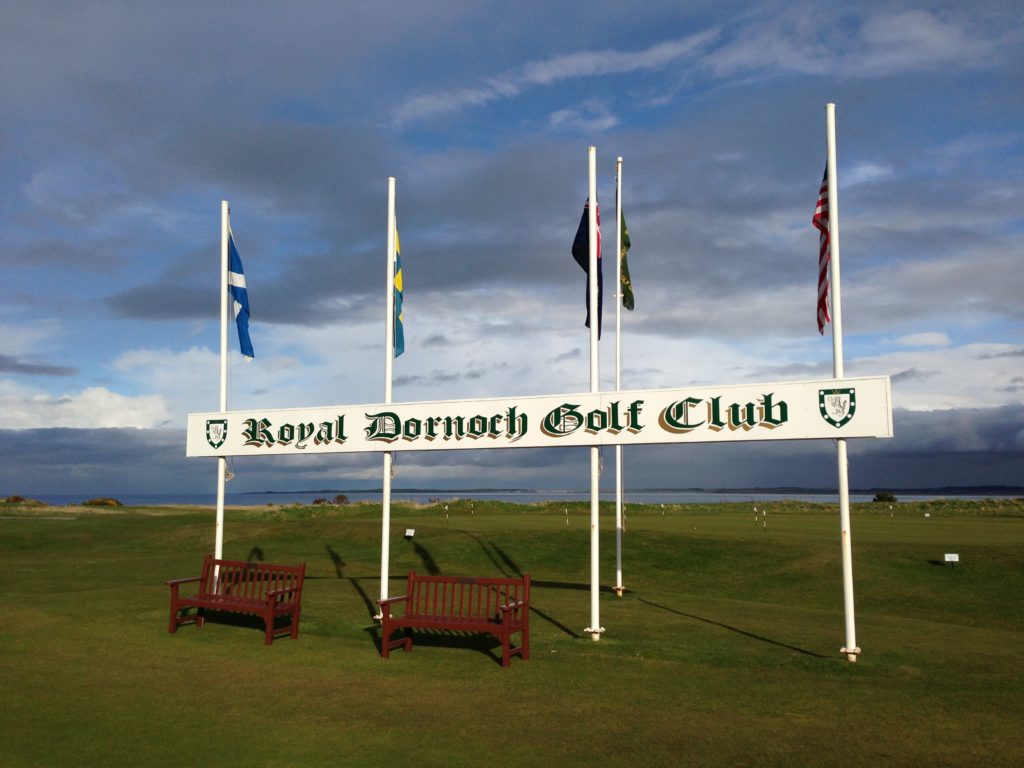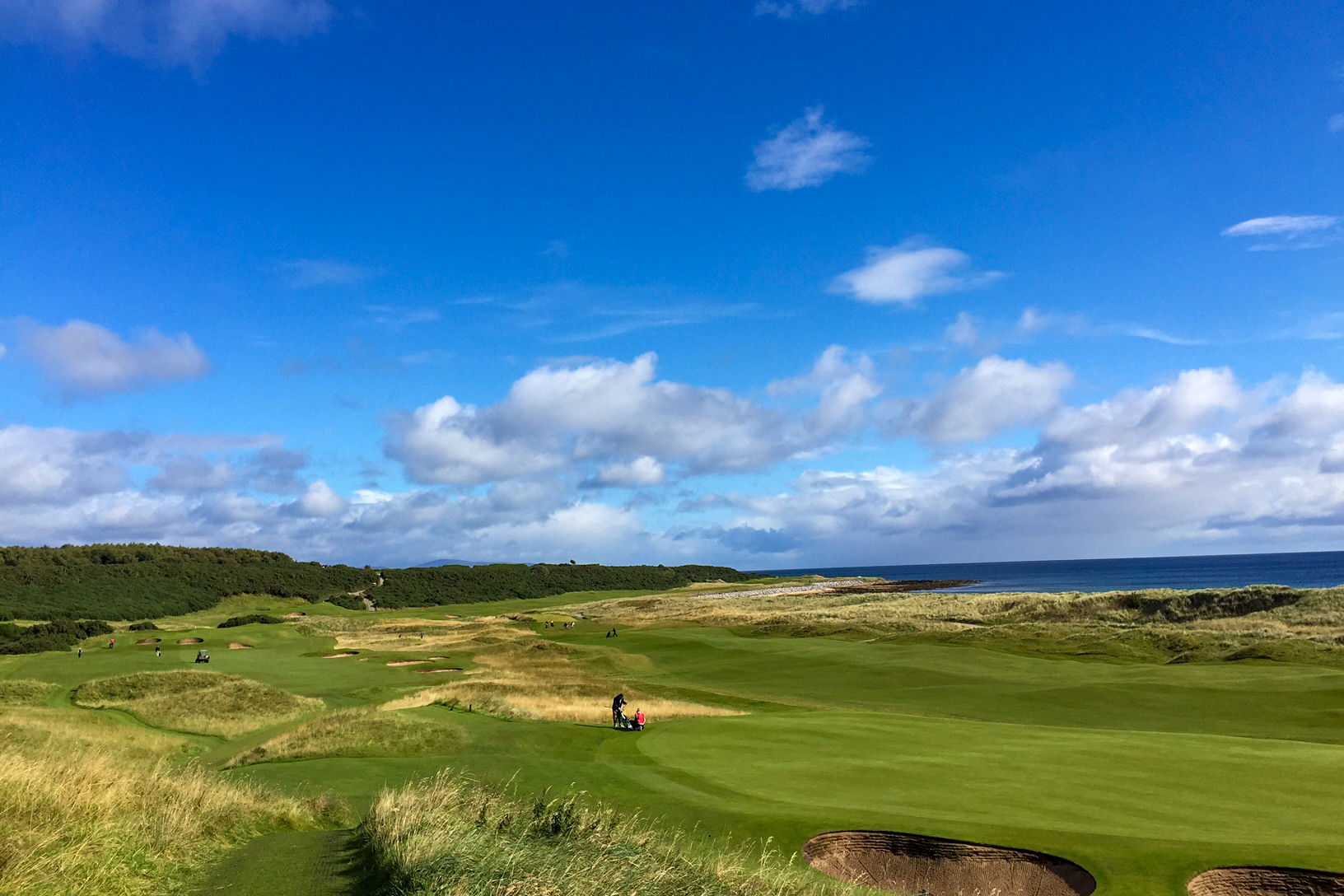Anticipating Royal Dornoch
An original links course, regarded among the very best in the world
Herbert Warren Wind called it “the most natural golf course in the world.” Tom Watson described it as the most fun he’d had playing golf. Donald Ross, the great American golf architect, learned his trade there. Golf Digest ranks it the No. 2 course in the world, behind Royal County Down.
Specifically, Jason and I didn’t know any of that when we booked our tee times at Royal Dornoch Golf Club for our first scheduled round in Scotland. But I’d seen the name enough, mentioned with reverence and affection by golfers, to know that Royal Dornoch was a destination.
And that with our miles-purchased airline tickets depositing us in Inverness, an hour away, it couldn’t be missed, and it would be a chance to play a course new to both of us.
In some form, golf has been played on this stretch of linksland on the Dornoch Firth since 1616, or so history tells us. The club itself was founded in 1877. Old Tom Morris laid out holes here, as did John Sutherland and J.H. Taylor; Ross was the club’s professional and greenskeeper in the 1890s.
This is not the northern-most course on the east side of Scotland, but almost. “On a latitude shared with Hudson’s Bay and northern Russia lies a majestic links of wild beauty that many know only by reputation,” wrote George Peper and Malcolm Campbell in “True Links. “One of the great outposts of the game.”
Leave it to the late James W. Finegan to describe it eloquently, in “Scotland, Where Golf is Great,” with help from Bernard Darwin:
“From the high third tee a majestic vista stretches away hole after hole, seemingly limitless, sea and hills and linksland. The world has been left behind and as we play on, there is this strong sensation of heading toward land’s end. The remoteness is total. …
“In ‘The Golf Courses of the British Isles,’ Bernard Darwin wrote: “Those who laid out the older links did not … think a vast deal about the good or bad length of their holes. They saw a plateau which nature had clearly intended for a green and another plateau at some distance off which had the appearance of a tee, and there was the hole ready made for them. … People as a rule took the holes as they found them and were not forever searching for the perfect ‘test of golf.’
“We are consistently struck by such a wonderful sense of naturalness as we make our way around Royal Dornoch. Everything simply looks as if it has been this way for centuries.”

The first tee at Royal Dornoch Golf Club/photos by Tom Cade.
A few holes, as described by Finegan:
The par 3 No. 6 is “a classic hole” named one of the top 500 — bunkers left and right front, a steep falloff on the right and “a stingy target.”
“It is the celebrated 14th, called Foxy, that is unforgettable. Completely natural — there is not a bunker anywhere on its 445 yards — the hole breaks left in the tee-shot landing area, and then after proceeding straight ahead for almost 200 yards, it jogs right, the fairway soon to rise abruptly to chest level and to a wide but shallow green. The hole is the very definition of ‘shot values.’” One of the world’s top 100.
In “A Course Called Scotland,” Tom Coyne wrote:
“From the end of the upper eight holes, the view back along the crescent strand of ribbons of highway and swirling beach grasses and the spire of Dornoch cathedral — it rivaled Royal County Down’s ninth for the best view of golf. It brought chills, which was good preparation for the back nine, where the holes dropped us down along the sand and water and the wind punched us in our souls.”
Our room here will be at the Royal Golf Hotel, 75 yards from the first tee. Green fees at Royal Dornach (April to October) are 180 British pounds, $240.
After the round, we will head south on A82 for a roughly six-hour drive to Machrihanish. For me, it will be a homecoming; I loved the place on my writing trip in 2016 and knew that if I ever got back to Scotland that I would want to return to Machrihanish. I am thrilled to share that with Jason.
Next: Machrihanish Dunes
